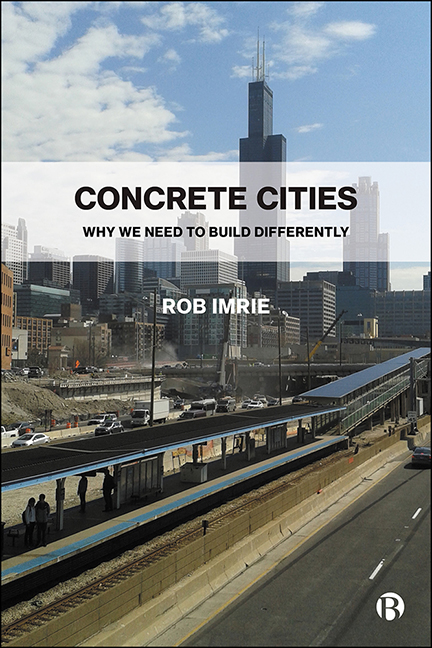Book contents
- Frontmatter
- Contents
- List of Figures
- About the Author
- Preface
- 1 Introduction: The Omnipresent Nature of Building
- 2 The Significance of Building and Construction
- 3 Building and the Construction State
- 4 Speculation and Building Booms
- 5 Disruption, Displacement and Dispossession
- 6 Demolition: Wasting the City and Teardown Building
- 7 Why Building More Housing Will Not Work
- 8 Building That Matters to People
- 9 Constructing for Species Survival
- 10 Building and Construction That Cares
- Notes
- References
- Index
Preface
Published online by Cambridge University Press: 30 April 2022
- Frontmatter
- Contents
- List of Figures
- About the Author
- Preface
- 1 Introduction: The Omnipresent Nature of Building
- 2 The Significance of Building and Construction
- 3 Building and the Construction State
- 4 Speculation and Building Booms
- 5 Disruption, Displacement and Dispossession
- 6 Demolition: Wasting the City and Teardown Building
- 7 Why Building More Housing Will Not Work
- 8 Building That Matters to People
- 9 Constructing for Species Survival
- 10 Building and Construction That Cares
- Notes
- References
- Index
Summary
At the heart of this book is an existential issue of why we build, and why we build in the ways that we do. The premise is that we build far too much and too badly, and in ways whereby many of the needs of people remain unmet, while despoiling and degrading ecology and the environment, or the very biospheres that we depend on for our existence. There is an unprecedented expansion in the rate and scale of urbanisation, and building activity is occurring everywhere on the planet, from the construction of major hydroelectricity installations, to transcontinental road and rail infrastructure. The rationality of building revolves around a system of supply shaped by speculation, or a political economy of construction that knows no bounds or limits to building. Here, a building is conceived more as an object than a liveable, vital, part of the biosphere, and as a commodity or means to realise monetised value through its production and exchange.
This translates into a bewildering range of building projects and products shaped by one of the most powerful, corporate, global industries. The construction sector has its imprint in every aspect of our lives. It has the world's largest ecological footprint by using materials like concrete with high levels of embodied energy and constructing office environments that use energy-intensive air-conditioning systems, and it is implicated in the large-scale, and escalating, conversions of green space to buildings and constructed infrastructure. Its ecological impact extends from the sourcing of forestry products from Amazonia used in flooring and related building products, to the construction of dams that are implicated in the drowning and destruction of settlements, and the displacement of different species. There is no part of environments that is not affected by the actions of actors in the construction sector, yet they operate with few restraints or checks.
Building is likely to be even more important in a post-COVID-19 world, or part of a post-pandemic economics that, in the words of British Prime Minister Boris Johnson (2020), is to ‘build, build, build’. This is a depressing scenario, whereby what is offered is more roads, motor vehicles, speculative development, vanity projects and construction-related pollution and environmental despoliation.
- Type
- Chapter
- Information
- Concrete CitiesWhy We Need to Build Differently, pp. ix - xiiPublisher: Bristol University PressPrint publication year: 2021



